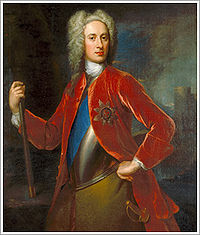January 11th Scots Book of Days Hillary Court Term
January 11 Hillary Court Term – January 11 to January 31
1418 sometime this year. “Torthorwald Castle”. Dumfries. CANMORE. Royal Commission on the Ancient and Historical Monuments of Scotland. Property of the de Torthorwald family until the end of the 13th century, when the estate passed by marriage to the Kirkpatricks. In 1418, William de Carleil Lord Carlyle of Torthorwald married the Kirkpatrick heiress. He may have been the builder of Torthorwald Castle,
· Carlyle Carleil Carlisle 1501 2 Semple2 Montgomerie2 Cochrane2 Miller2 Simmons2 Choate2 Anne Elizabeth Grace blair5 TG

1799 Map with Dumfries in Dumfries Shire, southwestern Scotland. Torthorwald is just outside of Dumfries the city. Solway Frith, Carlisle, Annan, Lochmaben,Redburn, Moffat, Corronhill, Penpoint, Craigside, Sanquhar, Galloway, Drum, Kirkilbute.
· Craig Craighead – Arkansas
1420 sometime this year. Scottish Reivers barricaded themselves in the Church at Coldingham, Berwickshire, Scotland. The Prior, William Drax, either smoked them out or burned them alive (according to the politcal leanings of the historian.) This action was condemned by the King and the Scots Parliament. Drax fled to Durham taking the Priory’s charters, where they still are (circa 2011). Border Reivers were raiders along the Anglo–Scottish border from the late 13th century to the beginning of the 17th century. Their ranks consisted of both Scottish and English families, and they raided the entire border country without regard to their victims’ nationality. Their heyday was perhaps in the last hundred years of their existence, during the time of the Stuart Kings in Scotland and the Tudor Dynasty in England.

Reivers at Gilnockie Tower, from an auld print
Vocabulary Merriam-Webster.com defines Reiver as Noun, Scottish for ‘raid’. From Scots reifen from Old English reafian ‘to rob’.
The Reivers is (1980s) a rock music group from Austin Texas. The Reivers (US) is a 1969 movie known as The Yellow Winton Flyer (UK) located in 1900 Mississippi.
1599 never happened in Scotland.
1746 Sometime in, Heritable Jurisdictions (Scotland) Act 1746. The opening salvo on the destruction of Scotland’s society, culture, and population. Traditionally, Scottish lords had inherited regalities and had been able to judge in civil and criminal cases among their dependents. The Act put an end to this by extending universal royal jurisdiction throughout Scotland. The Act repealed article XX of the Union with England Act, 1707, which continued all inheritable positions in Scotland without change. The powers of Scottish lords were transferred to sheriffs appointed by the King and the hereditary justiciarship of Scotland, held by the family of Argyll, was purchased (or confiscated) and transferred to the High Court and Circuit-courts of Justiciary. Lord Hardwicke argued in favour of the Act by asserting that it secured the allegiance of the people: “The people will follow those, who have the power to protect or hurt them”. However the Duke of Argyll argued that the decentralisation of jurisdictions was a major bulwark of liberty and Montesquieu believed that the multiple jurisdictions were a check on the crown and therefore a defense of liberty.

Field Marshal John Campbell, 2nd Duke of Argyll, 1st Duke of Greenwich Knight of the Garter.
Not given a chance to vote on the Heritable Act in a Parliament controlled by English members, tens of thousands of Scots, including ministers, voted with their feet and fled to the Carolinas. Including Robert Miller 3rd. Thus began the Highland clearances (and Lowland) which continued a three generations or about 75 years.
A social revolution was created in the Highlands and Islands by Government legislation that ended heritable jurisdiction. Formerly, the Scottish kings, without a standing army, had found it necessary to delegate authority to subjects who in return were granted large areas of land. Consequently, the power of a chief lay in the number of men whom he could call to arms. The Heritable Jurisdictions (Scotland) Act 1746 ended that prerogative and landlords, as real money replaced barter, began to make their land commercial through improvement and charging higher rent. The auld system of township farming, in which rent was paid mostly in kind, became increasingly uneconomical. Ever-expanding families tried to scrape a living from the land, but they failed for lack of ready cash. The little island of Inch Kenneth, off Mull, was ploughed from shore to shore, but still there was not enough food to keep the inhabitants alive.
From Proceedings of the Scottish Parliament on 27 September 2000. A Debate on the Highland Clearances. http://www.his.com/~rory/hlndclr.html
Campbell Earl of Argyll 1010 2Montgomery2Blair 2Cochrane2Miller 2Simmons2Choate to zoe TOAG

The Campbells are Comin’ O Ho. A Whig political song. 2nd verse – Great Argyle he goes before, before, He makes his cannons and guns to roar, to roar, wi’ sound o’ trumpet, pipe, and drum, The Campbells are com’in, upon Lomon.
[Loch Lomon is one of the many lakes between Scots hills and mountains.)
1751 did not occur in England, Ireland, British North America, and British colonies, as 1751 only had 282 days due to the Calendar Act of 1750. 1751 ran from March 25th 1751 (Lady Day) to December 31st 1751, the next date being January 1st, 1752. But this date in 1751 did occur in Scotland and most European countries.
1752 Paper War of 1752. Henry Fielding wrote on 11 January 1752: “If the Betrayer of a private Treaty could ever deserve the least Credit, yet his Lowness here must proclaim himself either a Liar, or a Fool. None can doubt that he is the former, if he hath feigned this Treaty, and I think few would scruple to call him the latter, if he had rejected it.” Regardless of the merits of Hill’s claim, a war was soon started: by the third issue of The Covent-Garden Journal, Fielding narrowed his satire upon John Hill.

The Conjurers (1753) depicting Fielding (left of center) and Hill (right of center)
1753 Sir Hans Sloane, 1st Baronet, PRS (16 April 1660 – 11 January 1753) was an Irish physician died.

Sir Hans Sloane’s, collection provided the foundation of the British Museum. Hans was the seventh son of Alexander Sloane (d. 1666), agent for James Hamilton, second Viscount Claneboye and later first Earl of Clanbrassil. Sloane’s family had migrated from Scotland, to Killyleagh in County Down, Ireland, but settled in the north of Ireland under James I King of England and Scotland. Sloane encountered cocoa while he was in Jamaica, in 1687, where the locals drank it mixed with water. HANS devised a means of mixing COCOA with milk to make it more pleasant. When he returned to England, he brought his chocolate recipe back with him. Initially, it was manufactured and sold by apothecaries as a medicine; though, by the nineteenth century, the Cadbury Brothers sold tins of Sloane’s drinking chocolate. In 1716, Sloane was created a baronet, the first medical practitioner to receive an hereditary title, and in 1719 he became president of the Royal College of Physicians, holding the office for sixteen years. In 1722, he was appointed physician-general to the army, and in 1727 first physician to George II. In 1727 also he succeeded Sir Isaac Newton as president of the Royal Society; Hans retired from it at the age of eighty. Wikipedia.
[Choate comment – I would not have noticed Sloan but for his having in the British Museum letters from Andrew Millar 6th, publisher on the Strand. On Millar devolved the chief responsibility of conducting Johnson’s ‘Dictionary’ through the press, Millar’s patience was sorely tried by Johnson’s unpunctuality, and when the last sheet was brought to Millar, Millar could not help exclaiming ‘Thank God I have done with him!’ On this being repeated to Johnson, Johnson replied, with a smile, ‘I am glad that he thanks God for anything.’ (Boswell on Johnson).
1755 Alexander Hamilton, January 11, 1755 or 1757[1] – July 12, 1804) was a Founding Father, first Secretary of the Treasury. Father, James A. Hamilton, the fourth son of the Scottish laird Alexander Hamilton of Grange, Ayrshire.

Hamilton Takes Command. In the Rev. Hugh Knox, the minister of Christiansted’s first Presbyterian church, Hamilton found another patron. Knox, along with the Cruger family, arranged a scholarship to send Hamilton to the United States for his education. At age 17, Hamilton arrived in Boston in October 1772 and was soon boarding at the Elizabethtown Academy in New Jersey, where he excelled in English composition, Greek and Latin. Hamilton went in 1773 to King’s College (now Columbia University), in Lower Manhattan New York City. Hamilton, at age 20, dropped out of King’s College and formed his own militia unit of about 25 young men.
www.smithsonianmag.com/people-places/hamilton.html#
1809 Army retreats to Corunna, Spain, Sir John Moore commanding. Tytler’s Britiannica.
1812 Archibald Cochrane of Hetton Hall (b 1783, d 06.08.1829, Captain RN) m. (11.01.1812) Hannah Jane Mowbray (d 08.10.1864, daughter of Arthur Mowbray of Sherburn Hall)
1815 Marquess of Seaforth created circa 1690 for Mackenzie became extinct 11 January 1815 for the 4th Earl of Seaforth.
1840. Marnock Banfshire and the Gospel of Jesus Christ. Samuel Mulliner (b. 1809), and Alexander Wright (b. 1804), Scots, arrive as missionaries for the Church of Jesus Christ of Latter–day Saints. [Ensign Feb. 1987]. Alexander walked a mile to the village, and began talking to auld friends about “the things of the kingdom.”
1939 Arrest Bulldog Drummond. Released. Fictional Scots heroes.

A war machine puts Scotland Yard on alarm.
1991 Highlander II: The Quickening In Glencoe, Scotland — the location of his death in the first Highlander film — Ramirez is revived. The hero is in a new suit acquired from the finest and oldest tailor’s shop in Scotland,

Disclaimer: The author of each article published on this web site owns his or her own words. The opinions, beliefs and viewpoints expressed by the various authors and forum participants on this site do not necessarily reflect the opinions, beliefs and viewpoints of Utah Standard News or official policies of the USN and may actually reflect
Utah Standard News depends on the support of readers like you.
Good Journalism requires time, expertise, passion and money. We know you appreciate the coverage here. Please help us to continue as an alternative news website by becoming a subscriber or making a donation. To learn more about our subscription options or make a donation, click here.
To Advertise on UtahStandardNews.com, please contact us at: ed@utahstandardnews.com.


Comments - No Responses to “January 11th Scots Book of Days Hillary Court Term”
Sure is empty down here...